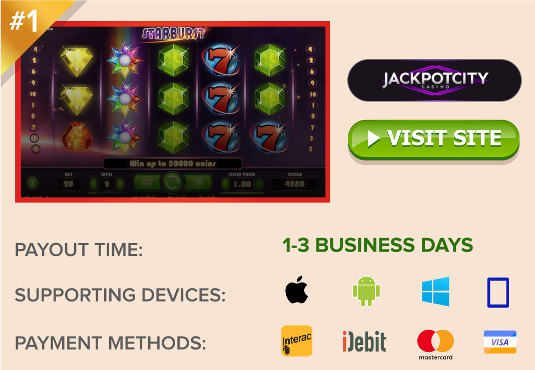Blackjack Basics – The Whys and Hows of 21
Fundamentals of Blackjack – Real Objective and Game Selection Tips
 Whether you’re new to blackjack, or you’ve been playing for years, it’s never a bad idea to get back to basics; to take stock of your game play; remind yourself of the true objective; evaluate the many rules variations within the game, and why every little detail matters so much.
Whether you’re new to blackjack, or you’ve been playing for years, it’s never a bad idea to get back to basics; to take stock of your game play; remind yourself of the true objective; evaluate the many rules variations within the game, and why every little detail matters so much.
Today, we’re going to take a look at all of these factors and more in our brief but crucial evaluation of…
The Fundamentals of Blackjack
When I say fundamentals, I don’t mean the basic rules of the game. This text assumes you already have that concept down. If not, click the following link and take a moment to learn…
What we’ll be discussing today are more intricate details, like the object of the game (the real objective, not the assumed one). We’ll also conduct a little Q&A on game rules, determining which ones are good for your games, and which ones are not.
The Real Objective of Blackjack
There are two conceptual objectives to the game. One is correct. One is not. Can you tell the difference?
-
To achieve a hand closest to 21, without going over.
-
To beat the dealer.
If you said #1, you’re wrong. If you spend every hand attempting to get close to 21 without busting, you’re missing out on the whole strategic side of the game. The goal should always be to beat the dealer. To do so, you should be basing each and every decision on the probability of your hand being or becoming a greater value than the dealers.
Basic strategy suggests you should not risk busting your hand when the dealer has a 4, 5 or 6 showing. The risk is only warranted when the dealer shows 7 or higher. And when the dealer shows 2 or 3, only take a risk if you’re holding hard 12. This is how to play to beat the dealer, rather than getting closer to 21.
Qualitative Q&A on Blackjack Game Selection
In this next section, we look at the three most effectuate rule variations in blackjack, and why you need to be careful when selecting a game. Note that we’ll only be covering the ones that players tend to underestimate the most. For a complete list, please see our:
Should the Dealer Hit or Stand on Soft 17?
Most games require the dealer to hit soft 17, and stand on hard 17+ or soft 18+. Some games, however, force the dealer to stand on all 17s, hard or soft. So which is better for the player?
If you said it’s better for the dealer to stand on soft 17, you’re right. It’s a common misconception that forcing the dealer to hit will result in more busts, and that any possibility of a bust is better than no possibility to bust at all. However, for a player, 17 is a strong hand, and not that difficult to achieve. If the dealer has 17, the worst you can do is push, whereas your 18, 19, 20 or 21 will beat the dealer’s 17 every time.
Odds stipulate that the dealer hitting soft 17 has a negative impact of -0.22% on the game’s overall RTP.
Is the Option to Double Down Anytime Beneficial?
If you answered yes to this last question, you’re one smart cookie. While strategy would normally call for doubling only on hands of 9, 10 or 11 – these being hands that are more likely to produce a high total if dealt a 10 – that’s not always the case. There are some circumstances in which doubling down on less totals is beneficial to the player, in terms of win probability.
For example, if you have a soft 16 against the dealer’s 5 or 6, this presents an excellent opportunity to double down. If you were holding a hard 16, strategy would instruct that you stand, because you’re more likely to beat the dealer anyway. By doubling, you get the same high win probability, with double the payout for success. Every good blackjack player knows that the key to beating the house is doubling and splitting at the most opportune moments.
Having the option to double down on any total increases the game’s overall RTP by +0.23%.
Is it Worth Playing if Blackjack Pays of 6-to-5?
No! Absolutely not. No way – no how – don’t do it. You should never play blackjack if the payout for a natural is only 6-to-5.
What about the other rules, you ask? Can’t they offset the devaluation of the 6/5 with enough player-friendly rule sin place. Again, that’s a hard no. I’ve never found any game with enough player-friendly rules in place to even come close to negating the horrific impact of this single rule.
The best house edge blackjack game I’ve ever seen that pays 6/5 is Caribbean Blackjack, at 1.58% RTP. That’s more than one full percentage point higher than any good blackjack game should be.
The reduction of the traditional 3/2 payout to 6/5 for a natural blackjack has a disgracefully negative impact of -1.39% on the RTP. For the record, dropping the payout to 1-to-1 (even money) would be even worse, reducing the RTP by -2.27%.
What’s Better, Single-Deck or 6-Deck Blackjack?
While the individual rules of the game will help evaluate the correct answer here, the fundamentals of blackjack almost always point to single-deck being the better choice. There are a number of reasons why single-decks games favor the player.
First of all, the odds of being dealt a 10-value card when doubling down are higher in a single-deck game. Yes, 6-deck games have the same relative odds, but single-deck games entertain far less variance in those odds.
Secondly, the odds of being dealt a blackjack is higher in a single-deck game. That goes for the player as well as the dealer. However, when the player gets blackjack, the payout is 3-to-2 (by standard rules). When the dealer gets blackjack, the player only loses even money.
Probabilities dictate that a single-deck invokes a positive impact of +0.48% on the overall game’s RTP.
 Jackpotcity.com is our editorial pick for your gaming needs. Currently offering an entire suite of casino games, as well as a wide range of Canadian deposit options, JackPotCity truly offers world-class gaming.
Jackpotcity.com is our editorial pick for your gaming needs. Currently offering an entire suite of casino games, as well as a wide range of Canadian deposit options, JackPotCity truly offers world-class gaming.





